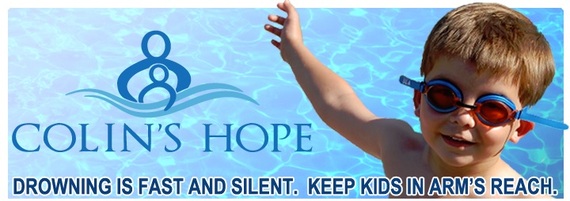When I was 6 or 7 years old, I witnessed the ocean drowning of a dear aunt.
Although too young for the full scope of the tragedy to sink in, the thoughts and the images of that event have remained with me for almost 70 years.
No wonder that, when our young grandson started splashing in our swimming pool a dozen or so years ago, the thought of such an unfathomable occurrence never left our mind.
We took every precaution possible, as I am sure the vast majority of parents, grandparents, relatives, caretakers and friends of so many young children do when they let their young ones swim in pools, lakes, rivers, water parks and more.
But the unimaginable does occur -- more often than we think.
Now that another swimming season is upon us, it may be the time to give "the unimaginable" some thought, because if statistics tell the truth, drowning is all too imaginable.
The Centers for Disease Control and Prevention publishes the following grim statistic: "From 1999 through 2010, a total of 46,419 deaths from unintentional drowning (including boating) occurred in the United States, an average of 3,868 deaths per year."
That is an average of more than 10 drowning deaths each and every day of the year.
But what is even more distressing, accidental drowning has become the leading cause of death from unintentional injury among children aged 1-4 years old. It replaces deaths resulting from motor vehicle accidents as the leading cause of death from unintentional injury for boys aged 1-4 years.
These child-drowning deaths occurred most often in a bathtub for children under 1 year of age and in a swimming pool for children aged 1-4 years. The latter location -- swimming pools -- accounts for more than 50 percent of all unintentional drowning deaths in that age group, according to the CDC.
At this point, the reader may ask, why the focus on younger children and swimming pools?
While, of course, every drowning is an immeasurable tragedy, the loss of a toddler under such horrific circumstances in one's neighborhood pool is bound to leave an indelible impression.
That is what happened on a beautiful June day almost seven years ago at an Austin, Texas, swimming pool.
To be precise, on June 13, 2008, Colin Holst, a proud and happy 4 1/2-year-old little boy went to the " big pool" -- just one day after graduating from swimming lessons and receiving his medal.
Colin was having a ball playing in the fountains and sprinklers with his friends, all moving around the pool together in a clump, playing and splashing and ducking in and out of the water.
Suddenly, in an instant, Colin wasn't with them. Time stood still as all eyes swept the pool looking for him, and then, only moments later, Colin was pulled from the shallow water unconscious and not breathing. Efforts to revive him at the pool were unsuccessful. Colin, the baby boy born "with a mop of dark hair that looked just like his mother's," died at the hospital the next day, having never opened his eyes again after his swim.
Out of this unimaginable tragedy, sprang a glimmer of hope -- even of good.
Grief-stricken by their loss and shocked to learn the cruel toll drowning takes on children of Colin's age, Colin's family founded an organization dedicated to preventing such tragedies from befalling other families: Colin's Hope.
Simply, "Colin's Hope envisions a world where children do not drown. Colin's Hope raises water safety awareness to prevent children from drowning."
As our weather warms up, as families once again head for our pools, lakes and beaches, please take time to familiarize yourself with water safety rules -- they might make the difference between a happy summer and the unimaginable.
An excellent place to do such is ColinsHope.org.
At Colin's Hope, learn about this wonderful organization's many water safety awareness programs, events, campaigns and resources. They all have one vision in mind: "A world where children do not drown."
While at Colin's Hope, take a look at their online "Water Safety Resources Hub," take the "Water Safety Quiz" and please consider volunteering for one of their many activities and programs and making a contribution so that the "glimmer of hope" may become a bright light -- a reality, as much as possible -- for our children and grandchildren.
A version of this story appeared at the Austin American-Statesman, April 10, 2015.

